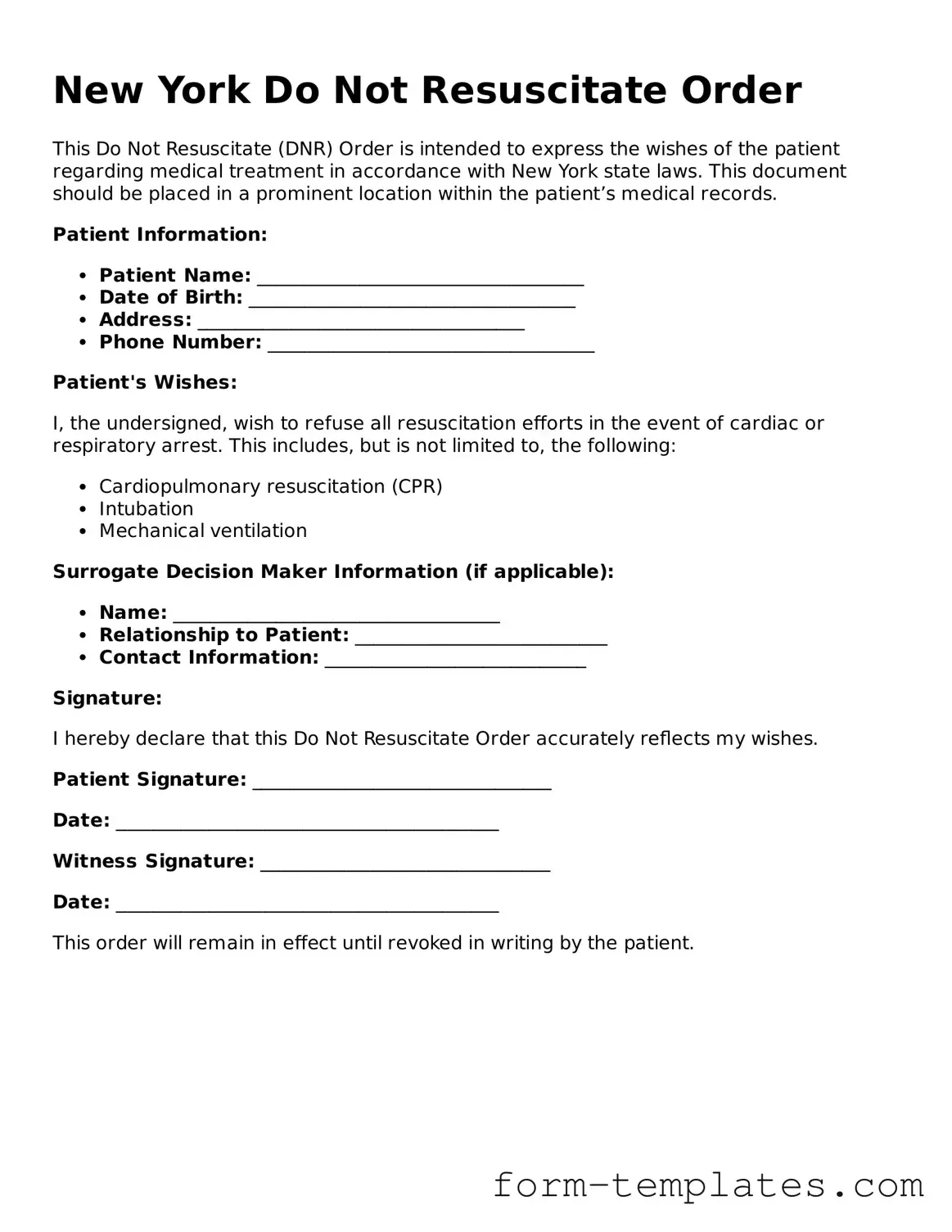Printable Do Not Resuscitate Order Form for the State of New York
A New York Do Not Resuscitate Order form is a legal document that allows individuals to express their wishes regarding resuscitation efforts in the event of a medical emergency. This form ensures that healthcare providers respect the patient's desire to forego life-sustaining treatment, reflecting personal values and preferences. Understanding the implications of this form is crucial for anyone considering their end-of-life care options.
If you are ready to take this important step, fill out the form by clicking the button below.
Open Your Document Now
